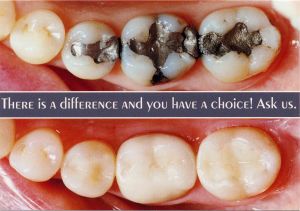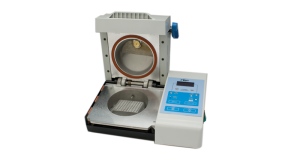What is Belleglass?

Belleglass is a laboratory processed composite restoration that closely resembles tooth structure. What makes it so special? During fabrication the material is brought to high temperature (about 293 degrees Fahrenheit) and pressure (about 2 atmospheres or 28 psi of nitrogen) allowing the acrylic to cure with less flaws. When cooled to room temperature the result makes for a much harder, stronger and durable dental restoration when compared to a typical chair-side cold-cure composite. Patients who drink hot coffee or tea and eat ice cream are prone to experience marginal leakage of their white cold-cure composite fillings. Sometimes you can see yellow-brown stains outlining the margins where leakage is occurring. (See Figure 2) Yuck! Belleglass restorations have a coefficient of thermal expansion closely resembling that of natural teeth. So, Belleglass is less prone to marginal leakage. In addition, it’s high compressive strength makes it much more durable and resistant to fracture than both silver fillings and chair-side cold-cure composite fillings. Consequently, Belleglass is the restoration of choice for patients that suffer from bruxism (night grinding) and may need adjunct nightguard therapy. In short, Belleglass restorations are excellent.
|
|
 |
| Figure 2 – Leaking Cold Cure Composite | |
Why Doesn’t the Acrylic Burn Up At Such High Temperature?
Indeed, this was a difficult technical problem to solve. How do you keep the acrylic in the composite from burning up when you raise the oven temperature and pressure so high to get an ideal cure? The trick was to design and fabricate a machine that would eliminate all the oxygen. Without oxygen there can be no burning. It took time and a lot of effort but technology triumphed and a machine that substituted pressurized nitrogen for oxygen was designed and built specifically for this purpose, a pretty slick high-tech accomplishment! The results yield a fabulous laboratory-processed restoration.

Can My Dentist Place Belleglass? Placing Belleglass usually requires a bit of extra education because of its highly technical nature. Also, the dental laboratory the dentist uses must be capable of producing Belleglass restorations. This requires extra training and special equipment, which is a bit expensive. An unpublished survey done recently in Queens, NYC showed that only about 4% of dental laboratories are “Belleglass-capable.” You can do your own survey by calling dental laboratories in your area and asking them if they do Belleglass restorations. Is Belleglass Really First Class? Word-of-mouth is best. Ask friends that have had Belleglass restorations done for them if they are happy about it. Chances are you will need a few hours to listen to them sing their praises. Belleglass is functional, has an excellent service record and is quite aesthetic (good looking). Belleglass HP and Belleglass NG (next generation, also Premise Indirect) are products of Kerr Corporation and their resident expert is Albert Kabashigawa. Belleglass NG uses proven technology with a BIS-GMA base and a mixture of aliphatic and urethane dimethacrylate resins with the smallest most uniform glass crystals available (only 3 microns). Belleglass is metal-free and holistic friendly. So, you don’t have to worry about mercury or lead leaching out, especially when using tooth whitening products. Please note that patients receiving radiation therapy to the head and neck for cancer are generally better off with metal-free dental restorations. What’s the Good News? The good news is that many insurance companies believe this service is worthwhile. It is always best to submit a free pre-treatment estimate before going ahead. Restorations placed in a timely fashion may help prevent further breakdown. That can translates to savings.
